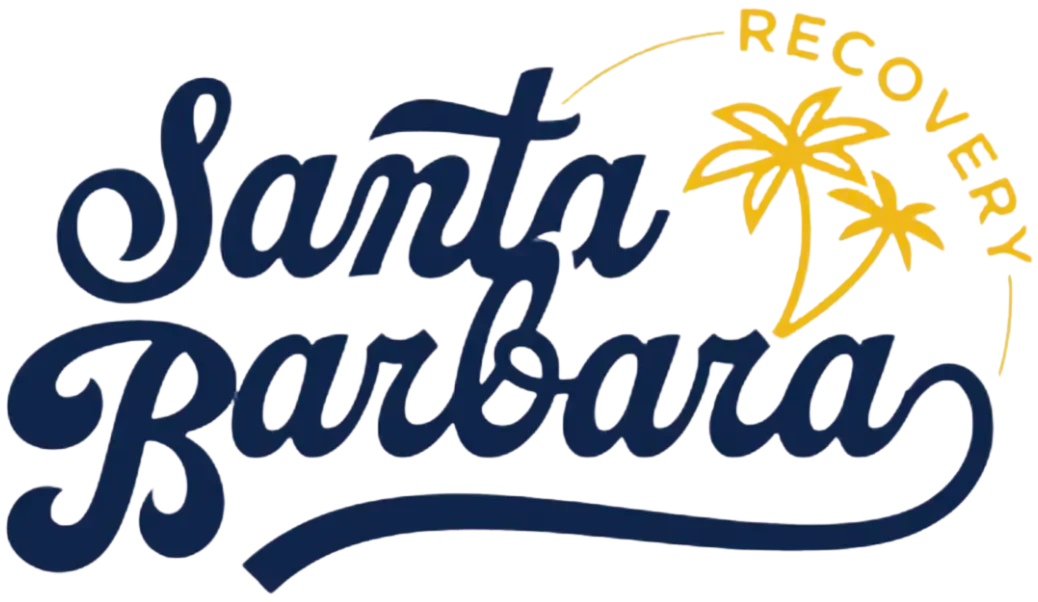To commence your recovery expedition, initial recognize that you require assistance – this demands immense bravery. Commence by recording your substance use patterns and triggers in a daily journal while seeking professional direction from a doctor or addiction expert. Contemplate medication-assisted treatment and evidence-based therapies like CBT to address underlying issues. Connect with support groups and construct a network of people who comprehend your struggles. There’s an abundance more to uncover about your path to lasting recovery.
Understanding the Signs of Drug Addiction

Many signs of drug addiction can manifest long before someone realizes they have a problem. If you’re concerned about yourself or a loved one, understanding these personal warning flags can help you identify when it’s time to seek help.
Common behavioral red flags include neglecting responsibilities at work or home, experiencing relationship conflicts, and becoming secretive about activities. You might notice physical changes like unexpected weight fluctuations, disrupted sleep patterns, or declining personal hygiene. Watch for psychological shifts too sudden mood swings, unexplained paranoia, or intense cravings that dominate your thoughts.
These signs often progress gradually, making them easy to overlook or rationalize. If you’re developing a tolerance to substances, experiencing withdrawal symptoms, or continuing use despite negative consequences, it’s crucial to recognize these as serious indicators of addiction.
Taking the First Step: Self-Assessment
If you’re concerned about your drug use, you can start by monitoring your daily habits and documenting when cravings or usage patterns emerge. Your honest self-assessment will help identify warning signs and understand how substance use affects your life, relationships, and wellbeing. You’ll also gain clarity on whether you’re ready to investigate treatment programs by tracking these patterns and completing online screening tools that evaluate your specific situation.
Recognizing Warning Signs Daily
Taking the initial step in the direction of recovery requires honest self-reflection about your relationship with drugs. Start by identifying behavioral shifts in your daily routines, such as neglecting responsibilities or withdrawing from loved ones. You’ll want to pay attention to changes in your social circles and any new financial struggles you’re experiencing.
While monitoring physical changes, watch for warning signs like unexpected weight fluctuations, altered sleep patterns, or declining personal hygiene. Notice if you’re experiencing unusual mood swings, increased anxiety, or unexplained irritability. These changes often develop gradually, making them easy to overlook or dismiss.
Keep track of these observations in a journal, noting patterns that emerge. This self-awareness isn’t about judgment it’s about understanding where you are so you can move forward effectively in your recovery passage.
Track Your Usage Patterns
Once you’ve recognized the warning signs, the next meaningful step involves documenting your substance use through structured self-assessment. To monitor substance consumption effectively and track emotional impact, you’ll need a systematic approach that helps you understand your patterns better.
- Keep a daily log of your consumption, including the type, amount, and timing of substances used this creates a clear picture of your usage patterns
- Document your emotional state before and after use, noting any triggers or situations that led to cravings
- Record physical symptoms, sleep quality, and energy levels to understand how substances affect your well-being
- Use standardized tools like AUDIT or DAST to quantify your risk level and track progress over time
Evaluate Treatment Program Readiness
Every successful recovery expedition begins with an honest self-examination of your readiness for treatment. When appraising recovery readiness, you’ll want to use reliable tools and resources that can help you make informed decisions about your next steps.
| Assessment Tool | What It Helps You Evaluate |
|---|---|
| Recovery Self-Assessment (RSA) | Program practices and recovery orientation |
| NCADD Drug Test | Severity of substance use patterns |
| NIDA Screenings | Substance-specific usage concerns |
| Turning Point Tools | Mental health and addiction issues |
When evaluating program suitability, consider factors like your trigger environments, support needs, and personal motivations. You’ll need to be honest about whether you’re driven by internal desires for change or external pressures. Don’t hesitate to use SAMHSA’s National Helpline for confidential guidance as you investigate your treatment options.
Finding Professional Help and Support
The stark reality that 95% of people needing drug rehabilitation don’t receive it underscores the importance of knowing where and how to find professional help. When evaluating provider credentials and examining treatment modalities, you’ll want to focus on programs that offer comprehensive support for your specific needs. With drug-involved overdoses claiming nearly 108,000 lives in 2022, seeking immediate professional intervention is critical for survival and recovery.
- Start with SAMHSA’s treatment locator to find licensed facilities that combine medical detox, counseling, and community support services
- Look for programs that address both addiction and any co-occurring mental health issues
- Verify that the facility offers personalized treatment plans with proven success metrics
- Consider programs that integrate medication-assisted treatment with behavioral therapy, as recent data shows improved recovery rates with this combined approach
Exploring Treatment Program Options

While traversing the path to recovery can feel overwhelming, understanding your treatment program options will help you make an informed choice that aligns with your needs and circumstances. When you’re ready to begin, you’ll complete an intake assessment to determine the most suitable level of care for your situation.
Treatment programs range from intensive inpatient care with 24/7 supervision to flexible outpatient services that let you maintain your daily responsibilities. Each option offers specialized approaches like CBT, DBT, or medication-assisted treatment. Look for facilities with proper program accreditation and consider factors like location, insurance coverage, and treatment duration. If you’re dealing with co-occurring mental health issues or have specific needs as a veteran or chronic relapser, specialized tracks are available to provide targeted support for your unique recovery endeavor.
Building a Strong Support Network
Successfully building a strong support network stands as one of the most pivotal elements in your recovery path. You’ll find that community based recovery services and peer led addiction support groups can greatly enhance your journey to sobriety, with studies showing up to 25% reduced relapse risk through active participation. Around 75% of people recover from substance use disorders with proper support systems in place. Accessing treatment is made easier since most insurance plans now cover mental health services. Only 23% receive treatment of the millions who need help for substance use disorders.
Building a strong recovery community isn’t optional it’s essential. Your chances of lasting sobriety increase dramatically through active participation in support networks.
- Join AA/NA meetings regularly they’ll provide structure and accountability while connecting you with others who understand your challenges
- Connect with a mental health professional who can address both addiction and co-occurring disorders
- Consider sober living homes or recovery coaches for personalized guidance and structured support
- Stay consistently engaged with your support groups regular attendance helps prevent isolation and builds lasting recovery habits
Creating a Personal Recovery Plan

Developing a personal recovery plan signifies your crucial initial stride in the direction of enduring sobriety, functioning as your navigation through the obstacles to come. Begin by identifying your specific triggers and vulnerabilities, then establish clear long term goal setting that addresses both your sobriety milestones and overall well-being. Having routine and structure will replace feelings of uncertainty with stability as you progress.
Your plan should detail treatment methods that work best for you, whether it’s therapy, medication-assisted treatment, or a combination of both. In most cases, medically supervised detox should be your first step before proceeding with other treatments. Create accountability partnerships through support groups and sober buddies who’ll help you stay on track. Structure your daily routine with healthy activities, including exercise, proper nutrition, and mindfulness practices. Remember to include specific actions for handling high-risk situations and establish a timeline that breaks down your recovery into manageable phases, from initial treatment through long-term maintenance.
Developing Healthy Coping Mechanisms
You’ll find tremendous relief in practicing mindful stress release techniques, such as deep breathing, meditation, or gentle movement exercises, which can help you navigate challenging moments without turning to substances. Building strong emotional support networks through peer groups, counseling, and trusted friends creates a reliable foundation for your recovery path. A crucial part of long-term success is learning to advocate for yourself when facing difficulties. When you combine these coping strategies with regular check-ins with your support system, you’re establishing powerful tools that will serve you well throughout your recovery process.
Mindful Stress Release Techniques
Why do so many addiction recovery programs emphasize mindfulness? Because it’s one of the most effective ways to manage stress and cravings without turning to substances. When you’re mindful, you’ll learn to observe your thoughts and feelings without judgment, helping you break the cycle of automatic reactions. Taking time to be in the moment helps ground you in reality rather than getting lost in destructive thought patterns.
You can start practicing mindfulness through these proven techniques:
- Try guided imagery and progressive muscle relaxation during body scan meditation, releasing tension from head to toe
- Practice the 4-7-8 breathing technique when cravings hit: inhale for 4 seconds, hold for 7, exhale for 8
- Keep a mindful journal to track your triggers and emotional patterns, using structured prompts for self-reflection
- Join an MBSR program that combines meditation, yoga, and stress management techniques for all-encompassing support
Building Emotional Support Networks
A strong emotional support network serves as the cornerstone of successful addiction recovery. You’ll need to identify trustworthy individuals who’ll respect your odyssey and maintain confidentiality. Start by connecting with family members, close friends, and professionals who understand addiction recovery and can help in building trust throughout the process.
Consider joining support groups where you can share experiences with others facing similar challenges. These groups offer safe spaces for maintaining motivation through shared goals and milestones. You’ll benefit from both in-person meetings and virtual support options. Remember to practice open communication with your network about your triggers, emotional needs, and recovery goals. Working with addiction specialists and participating in therapy sessions can provide additional structured support while strengthening your coping strategies.
Managing Triggers and Avoiding Relapse
Managing triggers and preventing relapse represent critical challenges in recovery, with statistics showing that 40-60% of people face setbacks during their voyage. You’ll need clear relapse prevention strategies and a solid plan for managing emotional triggers to stay on track.
To protect your recovery odyssey, focus on these proven approaches:
- Create a personalized prevention plan that includes emergency contacts and specific actions to take when cravings hit
- Map out your unique triggers identify people, places, and emotions that might tempt you to use
- Build healthy alternatives like exercise, meditation, or creative hobbies to replace old habits
- Connect with support systems including sponsors, counselors, and recovery groups who’ll help you navigate challenging moments
Deep breathing exercises can provide immediate relief when facing intense cravings or anxiety during recovery. Understanding that addiction impacts brain reward circuits can help you recognize why certain triggers feel so powerful and validate the challenge of overcoming them.
Establishing New Daily Routines
You’ll find stability in recovery by creating three essential daily anchors: morning wellness activities to start your day with intention, regular movement to heighten your energy and mood throughout the day, and evening wind-down rituals to promote restful sleep. Your morning can include meditation, stretching, or journaling, while daytime activities might involve walks, exercise classes, or therapeutic movement that fits your schedule and abilities. As you end each day, calming practices like reading, gentle stretching, or mindfulness exercises will help signal to your body and mind that it’s time to rest, creating a complete framework for your new healthy routines.
Morning Wellness Activities
Establishing strong morning routines forms the cornerstone of successful addiction recovery. Starting each day with intentional practices helps build resilience and maintain sobriety. A structured morning creates space for self-reflection and positive habit formation while connecting you with critical support resources. Incorporating moderate physical activity during morning hours can significantly improve sleep quality and reduce recovery-related stress.
- Begin with mindfulness through morning meditation practices or guided breathing exercises using recovery-focused apps
- Engage in daily journaling activities to track emotions, triggers, and progress while setting clear intentions for the day
- Access early morning support groups and helpline contacts when needed for immediate guidance
- Utilize recovery resources like books, podcasts, and mobile apps to strengthen your knowledge and coping skills
Movement Throughout Your Day
Physical movement serves as a powerful cornerstone in addiction recovery, creating essential structure while naturally enhancing your body’s feel-good chemicals. Start by incorporating purposeful activities throughout your day using this simple framework:
| Time of Day | Movement Type | Nutritional Support |
|---|---|---|
| Morning | 10-min gentle walk | Post-walk breakfast |
| Mid-morning | Stretching break | Hydration focus |
| Afternoon | Group fitness class | Recovery snack |
| Evening | Nature walk | Light dinner |
| Before bed | Gentle yoga | Herbal tea |
You don’t need to start with intense workouts begin with short walks and gradually build up. Remember, consistency matters more than intensity. When you’re feeling low, even simple movements like stretching can help maintain your routine. Combine these activities with proper nutrition to support your body’s healing process.
Evening Wind-Down Rituals
Creating a consistent evening wind-down ritual marks one of the most critical shifts in your recovery expedition. Your brain needs time to transition from day to night, especially as you’re healing from addiction. By incorporating relaxation techniques and nourishing activities, you’ll build a foundation for restorative sleep.
Start with these proven wind-down practices:
- Set aside 90 minutes before bed for gentle activities like reading or journaling
- Practice mindful breathing or body scan meditation to release physical tension
- Dim your lights gradually and switch devices to night mode to support your natural sleep cycle
- Choose calming beverages like herbal tea instead of stimulants, and avoid heavy meals close to bedtime
Measuring Progress and Celebrating Milestones
The trek to recovery becomes more meaningful when you can see and celebrate your progress along the way. By quantifying mental health improvements and celebrating small wins, you’ll build momentum in your recovery expedition. Track your progress using standardized tools while acknowledging every step forward counts.
| Milestone Type | What to Track | How to Celebrate |
|---|---|---|
| Daily Progress | Mood & Cravings | Journal Entry |
| Weekly Goals | Therapy Attendance | Share in Group |
| Monthly Achievement | Sobriety Duration | Family Dinner |
Frequently Asked Questions
How Long Does Withdrawal Typically Last for Different Types of Drugs?
Your withdrawal duration varies by substance: alcohol symptoms peak within 72 hours and can last weeks; opioid withdrawal typically resolves in 4-10 days; benzodiazepine withdrawal may extend 2-8 weeks; and stimulant withdrawal can persist for several weeks. The medication duration and underlying causes of your addiction affect recovery time. Remember, everyone’s experience is unique, and medical supervision is essential during detox for your safety and comfort.
Can I Continue Working While Going Through Initial Addiction Treatment?
Yes, you can continue working during treatment, and evidence shows employment often supports better recovery outcomes. Focus on managing work responsibilities by discussing flexible scheduling with your employer many offer accommodations for medical appointments and therapy sessions. You’ll likely be more productive in the long run by addressing your health needs now. Consider starting with outpatient programs that work around your job schedule while maintaining confidentiality.
Will My Health Insurance Cover Addiction Treatment and Recovery Programs?
Many health insurance plans cover addiction treatment, thanks to federal parity laws requiring equal coverage for mental health and substance use disorders. Your coverage options typically include detox, inpatient/outpatient programs, and counseling services. Contact your insurance provider to verify specific benefits and coverage levels. If you’re uninsured or underinsured, financial assistance programs, sliding scale fees, and state-funded treatment centers can help make recovery services more affordable and accessible.
Should I Tell My Employer About Entering Addiction Recovery?
You’re not legally required to disclose everything, but telling your employer may be necessary if you need time off for treatment or workplace accommodations. Consider your confidentiality concerns and approach HR initially, as they’re trained to handle sensitive information. Focus on discussing specific workplace support you’ll need rather than personal details. Remember, the ADA protects you from discrimination, and many employers offer EAP programs to support your recovery expedition.
How Do I Explain My Recovery Journey to My Children?
Explain your recovery process to your children with age-appropriate honesty and openness. You’ll want to frame addiction as a health condition that you’re actively working to manage. Share your recovery progress in simple terms, emphasizing that you’re getting help and working hard to get better. Discuss family support openly, letting them know it’s okay to ask questions and express their feelings. Remember to reassure them that the situation isn’t their fault.





